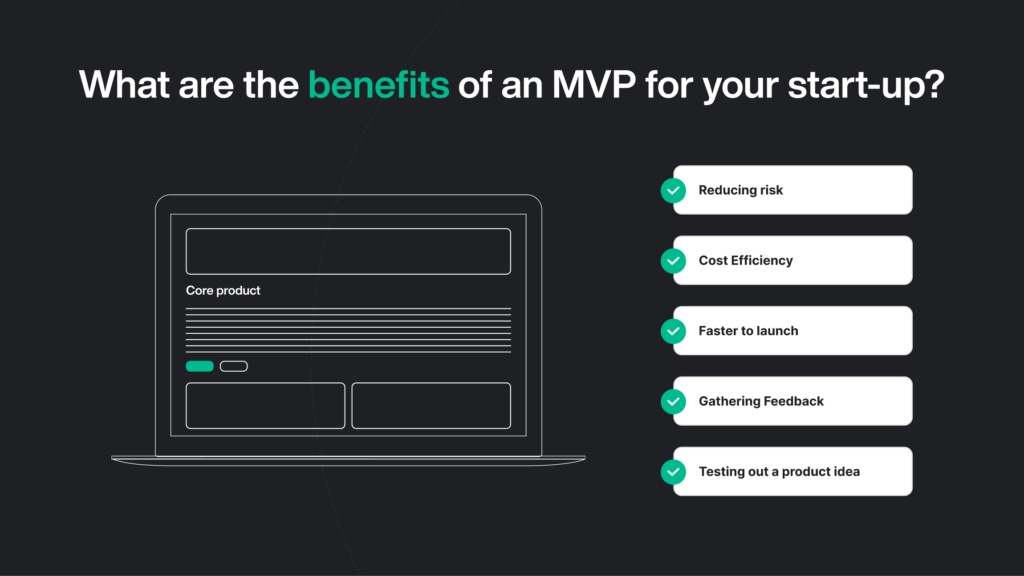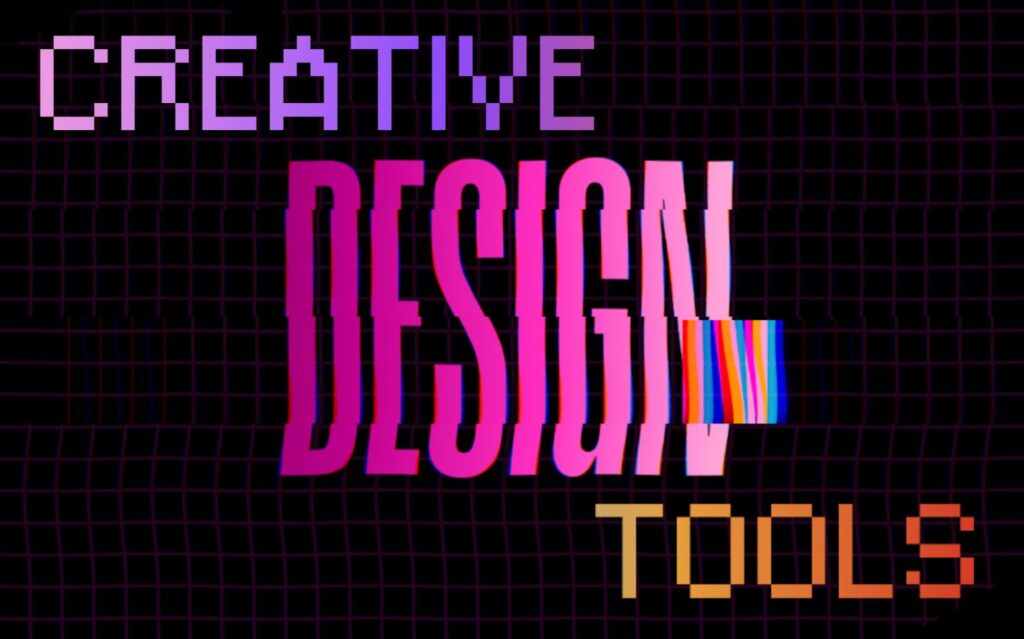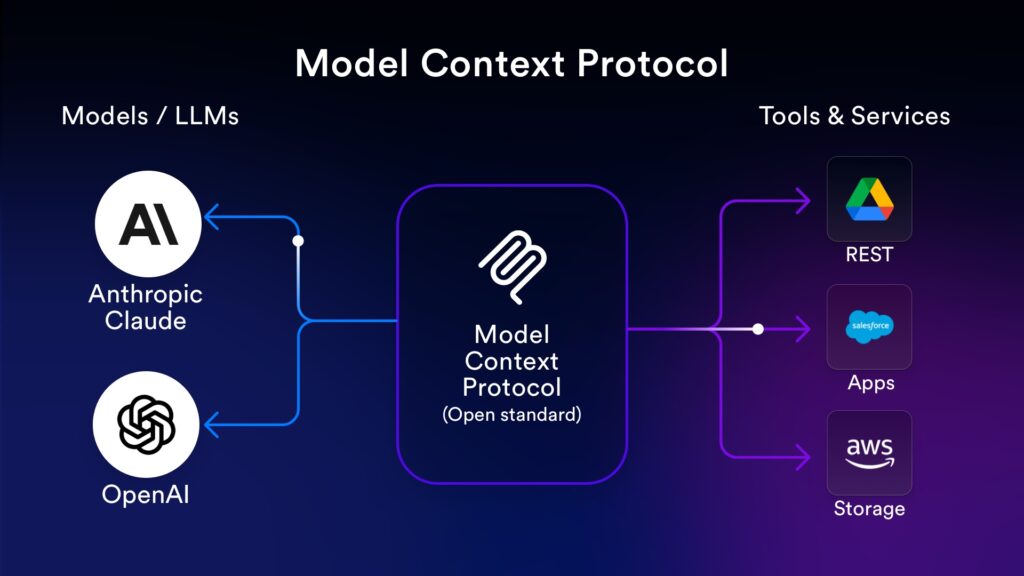Planning and Starting a new software business or project can be simultaneously exciting and daunting. How much investment will be needed to fund the project? Will it work? What are the most essential features and benefits we’ll deliver to our users, and how will we monetise our product? These are all commonly asked questions.
One way to answer these questions is to prioritise and focus on your initial needs and plan and execute a minimum viable product.
What is an MVP? (Minimum Viable Product)
A Minimum Viable Product (MVP) is the simplest version of your product, containing only the essential features that can be built upon for future development. When starting up, creating an MVP allows you to launch your product’s core elements in good time without developing unnecessary features that your audience might not resonate with. The idea is that the MVP allows for user feedback and increases the likelihood of a successful product that meets your target audience’s needs while saving time and costs.
New research by Harvard Business School’s Shikhar Ghosh shows only 25% of start-ups succeed. (hbr.org). MVPs minimise the risk of failing and boost the chance of success. Industry leaders like Uber, Spotify, and Airbnb began their journeys with MVPs. They started with a core idea, transformed it into a primary product, and utilised feedback to enhance their product. For instance, Uber began as a simple app connecting users with local drivers, allowing them to access rides conveniently. This MVP allowed Uber to gauge interest in ride-sharing and refine their platform based on user feedback. LightFlows has partnered with several companies to develop MVPs, all of which have succeeded. You can explore their accomplishments here.
Understanding the concept of a Minimum Viable Product (MVP) is crucial for startups. Let’s delve into the benefits of MVP and why it’s become popular for startup success.
What are the benefits of an MVP for your start-up?
1. Reducing risk: Building an MVP minimises the risk of developing a complete product. By only building the foundations, businesses can test the product and identify flaws or areas of improvement early on.
2. Cost efficiency: Developing the entire product from scratch can be expensive, but developing an MVP saves cost.
3. Faster to launch: Prioritising the product’s core elements facilitates a quicker launch than developing the entire product.
4. Gathering feedback: An MVP allows start-ups to gather feedback and improve and alter their product to market needs. This increases the likelihood of success.
5. Testing out a product idea: An MVP enables startups to test their product’s core components in the market, empowering them to make informed decisions about future development and avoiding the need for extensive revisions.

The types of MVP for startups
When it comes to creating an MVP, there are two types of MVPs you can choose from: Low-fidelity MVPs and high-fidelity MVPs.
Low-fidelity MVPs
Low-fidelity MVPs are used to test potential demand and gather feedback on the product concept. These MVPs are mockups or what you call fake MPVs that stimulate the functions of the product without actually building the entire product. Low-fidelity MVPs can be created quickly at low cost, allowing start-ups to test their idea before entirely investing.
High-fidelity MVPs
On the other hand, high-fidelity MVPs are more advanced versions of the product, including more detailed design and functionality. This MVP provides a more realistic representation of the product and allows for comprehensive user testing and validation. However, they usually require more time and resources to develop compared to the low-fidelity MVP’S
Either MVP would be suitable for start-ups, depending on your specific objectives. Startups with limited resources and need quick validation may opt for a low-fidelity MVP. In contrast, those with a clearer product vision and more resources may invest in a high-fidelity MVP to deliver a more refined user experience.
Building an MVP for startups: why and how should you approach it?
Building a Minimum Viable Product (MVP) is crucial for startups as it offers a structured approach to product development, allowing you to validate your ideas, minimise risks, and optimise resource allocation. Let’s discuss the key aspects of how you should approach it.
Conduct market research
The most common reasons behind the startups’ failures are lack of budget (38%) and no market need (35%). (nearshorefriends.de) This is why market research is essential before building an MVP. The first step to creating an MVP is understanding your target audience, their needs and the existing competition in the market.

Identify key objectives
Once you understand your audience and their needs, your product must offer solutions. Identify the key objectives of your MVP, which are the core features and functionalities that will address those needs. Keep in mind that these objectives should align with your overall business goals.
Develop a strategy
To build an effective MVP, it’s essential to follow a strategy. This involves focusing on the most crucial aspects of your product and eliminating any unnecessary features. The MVP must contain all the essential features that allow for future expansion. By prioritising what is necessary, you can save time and resources while delivering value to your target audience.
Think through the user’s journey
Once you’ve identified your target audience, their pain points, and fundamental objectives to meet the market’s needs, it is essential to think through the user’s journey. Please look at how your target audience will interact with your product and how you can provide them with a seamless and enjoyable experience. This includes user interface design, ease of use, and customer support.
Build the MVP
Once you have conducted thorough market research, identified your target audience, and set your key objectives, it’s time to start building your Minimum Viable Product (MVP). This initial version of your product showcases its core features and functionalities.

How long does it take to build an MVP?
Although building an MVP is quicker than the complete product, each project varies depending on the industry and the essential features you need. Typically, if you make a low-fidelity MVP, it will be quicker than building a high-fidelity MVP. In our experience with MVPs, it usually takes around 3-4 months to build, but this can vary depending on the complexity of the product and the resources available.
Launch and gather feedback
Once your MVP is built, it’s time to launch it in the market and gather user feedback. This feedback is crucial as it will help you understand how well your product meets the market needs and identify areas for improvement. Actively listen to your users, analyse their feedback, and make necessary adjustments to enhance your product further.
Summary
An MVP is the essential product component for future development, offering benefits like risk reduction, cost efficiency, faster launch, feedback gathering, and idea testing. If you need help building an MVP effectively, start with market research, understand your audience and competition, and develop a strategy to address audience problems. If you’re interested in learning how we can assist your startup, don’t hesitate to get in touch.
For enquiries regarding startups, get in touch with us.



